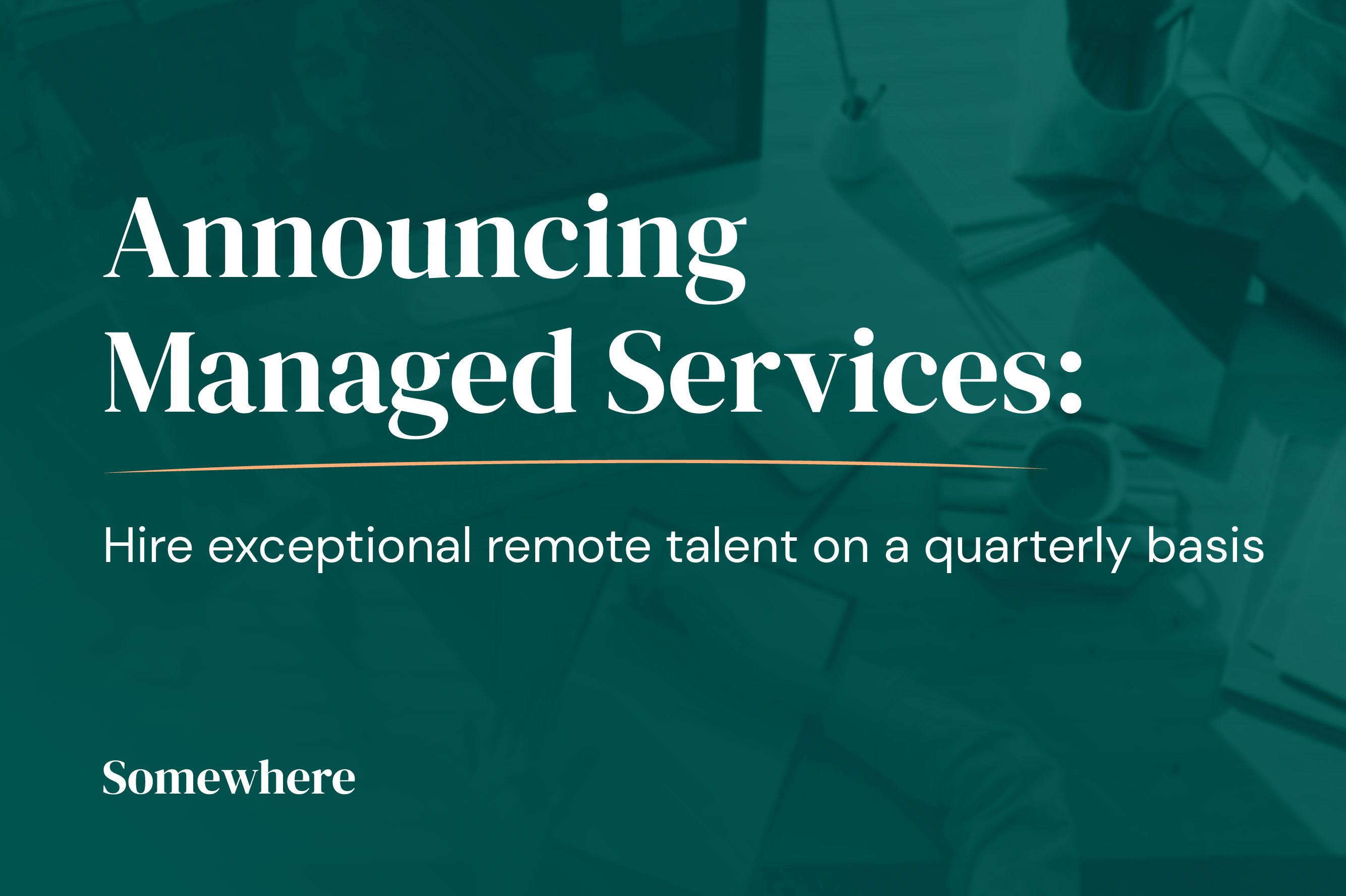I still remember the scramble back in 2021 when a SaaS client I was advising landed a partnership with a large accounting software provider. Practically overnight, they needed to onboard hundreds of new small-business users who'd been referred through the partner's customer network. The client's five-person team went from handling about 200 support tickets a week to 350+, not to mention a proportionate spike in demo calls and social media messages.
Everyone was working 14-hour days just to stay afloat. Revenue was growing, but morale (and response times) were tanking. That was when we brought in two virtual assistants: one dedicated to handling Tier 1 support emails and live chat, the other managing social media scheduling and preparing onboarding guides for new customers.
This is just one example of how businesses use virtual assistants. Beyond support and admin tasks, I've seen VAs drive impact across bookkeeping, content creation, lead generation, project management, even specialized roles like ecommerce product listing or CRM maintenance.
Experiences like that are becoming more common. Businesses today aren't turning to virtual assistants merely to save money. They're doing it to stay nimble, access specialized skills, and keep teams focused on high-value work.
In this piece, I'll share the most in-demand virtual assistant services right now, and, just as importantly, how to use them effectively to keep your business running smoothly.
The Most In-Demand Virtual Assistant Services Today
If there's one thing I've learned helping companies scale, it's that virtual assistants have moved far beyond simple admin tasks. Businesses are increasingly tapping VAs for specialized skills that once felt impossible, or at least impractical, to delegate remotely.
A few years ago, handing off work like customer support systems, bookkeeping, or CRM management wasn't just a trust issue; it was a logistical one. Many business tools weren't cloud-based, making it hard for someone outside your office to access systems securely. Companies worried about data security, complex compliance requirements, or the cost and time needed to train a remote worker on proprietary processes.
But that's changed dramatically.
Today's virtual assistants often arrive already trained in popular tools, whether that's Zendesk, HubSpot, QuickBooks, or Shopify, and can plug into cloud-based workflows from anywhere. Secure file sharing, VPNs, and detailed permissions make it safer than ever to grant remote access without exposing sensitive data. What used to be a technical and operational headache is now an everyday reality for distributed teams.
- Administrative support – Scheduling, travel booking, data entry, and general task management that keeps leaders focused on big-picture work.
- Customer service – Handling live chat, Tier 1 email support, and basic troubleshooting to keep response times low.
- Social media management – Creating posts, scheduling content, responding to comments, and tracking engagement metrics.
- Bookkeeping and finance assistance – Invoicing, expense tracking, payroll support, and reconciliations under the guidance of your accountant.
- Email and calendar management – Keeping inboxes organized and calendars under control, which is a lifesaver for busy executives.
- Data entry and CRM maintenance – Updating contact records, cleaning data, and ensuring reports stay accurate.
- Content production – Drafting blog posts, newsletters, or product descriptions to feed marketing pipelines.
- Project coordination – Managing timelines, follow-ups, and task assignments in tools like Asana or Trello.
- Ecommerce store support – Uploading product listings, managing inventory records, or handling basic customer queries for online stores.
- Lead generation and sales enablement – Researching prospects, preparing sales lists, and managing outreach campaigns.
Even smaller teams are discovering how much capacity (and expertise) they can unlock by delegating these roles.
Keep reading, and I'll dive into why demand for these services is booming and how to make sure you integrate VAs into your business successfully.

Why Demand Is Surging for Virtual Assistants
Virtual assistants aren't new, but the scale and nature of demand for them has shifted dramatically in the past few years.
In my experience, there are four major forces behind the surge:
1. The Remote-First Shift Became Permanent
Before 2020, many companies were hesitant to allow critical work to happen outside the office. But the pandemic forced businesses to build remote-friendly operations; tech stacks, processes, and mindsets alike. Now, many leaders realize there's very little practical difference between hiring a remote employee locally and hiring skilled virtual talent from another country.
2. Pressure to Operate Leaner
Economic uncertainty has pushed businesses to scrutinize costs while staying agile. Hiring a full-time employee in expensive markets like the US or UK comes with steep overhead, benefits, taxes, and office space. Virtual assistants allow companies to pay only for the hours or outcomes they need, without long-term commitments.
3. A Rise in Specialized VA Talent
There's a growing pool of virtual assistants who specialize in high-skill tasks. You'll find VAs with experience in bookkeeping software, social media analytics, CRM maintenance, ecommerce platforms, or lead-generation tools. Businesses no longer have to settle for "generalist admin help". They can hire for precise skill sets.
4. Access to Global Talent Pools
Businesses are increasingly comfortable looking outside their home markets to find talent. That means they can tap into regions with excellent English proficiency, strong technical skills, and significantly lower labor costs. For example, I've worked with VAs in the Philippines, Latin America, and Eastern Europe who bring high-level expertise while working seamlessly across time zones.
All of this has changed how business leaders view virtual assistance. It's no longer about "outsourcing low-level tasks"; it's about strategically extending a team's capabilities and creating operational breathing room.
In the next section, I'll dig into how to actually integrate virtual assistants into your business and make sure you're getting the most value out of the relationship.
How to Integrate Virtual Assistant Services Successfully
Hiring a virtual assistant is only half the battle. The real ROI comes from integrating them into your business so they work as seamlessly as your in-house team. Here's how to do that effectively and avoid the pitfalls I've seen many founders and managers face.
Identifying the Right Tasks to Delegate
Start by auditing where your time actually goes. For a week, keep a simple log of your daily activities in 15-30 minute blocks. Highlight any task that doesn't require strategic judgment, happens repeatedly, or blocks higher-value work.
Next, rank tasks by two axes:
- How time-consuming they are
- How easy they are to document and delegate
I've helped clients discover that even tasks they assumed were "core" often could be handed off with the right instructions. For example, writing first drafts of blog posts, summarizing data reports, or creating basic client proposals.
Pro tip: Think beyond "just admin." VAs today can handle operational tasks, research, financial tracking, and client communications, often better than an overwhelmed in-house team.
Choosing the Best-Fit Virtual Assistant Services
Not all VAs are the same. Once you've defined what you want to delegate, look for talent with the right mix of skills and fit for your business:
- Industry experience
- Familiarity with your software stack (e.g., HubSpot, QuickBooks, Zendesk, Shopify)
- Language and cultural fit
- Time zone compatibility for real-time collaboration
- Bandwidth and flexibility for scaling as you grow
For example, one startup I worked with wanted help with blog writing. They initially hired a VA with good English skills but no tech background. The result? Endless rewrites because the VA struggled with SaaS terminology and audience tone. Switching to a VA who'd worked at a tech content agency saved hours and frustration.
By asking the right VA interview questions, you’ll be able to find just the right person who can help you and your business the most.
Onboarding and Integration Best Practices
This is where many teams drop the ball. Even a super-talented VA can't guess how you want things done. Here's how to set them up for success:
- Define clear outcomes – Instead of saying "Help manage my inbox," explain what success looks like: which emails get immediate replies, which get flagged, and which get archived.
- Document processes – Create SOPs (standard operating procedures), checklists, or screen recordings using tools like Loom. It's time-consuming once, but saves huge time later.
- Introduce them to your team – Include VAs in Slack channels, project boards, and meetings where relevant. Feeling "in the loop" prevents mistakes.
- Establish communication norms – How often should they check in? What channels to use for urgent vs. non-urgent matters? What's your preferred format for updates?
- Start small, then scale – Give a new VA a defined project or limited hours. Once you're confident, expand their responsibilities.
Pro tip: Consider creating a "VA onboarding kit": a single document or folder with login info, brand guidelines, example deliverables, and communication preferences.

Maximizing the Strategic Value of Virtual Assistants
Virtual assistants can absolutely save time, but the businesses that get the highest ROI treat them as strategic partners, not just task-doers. Here are some higher-level questions worth exploring before (and during) your VA engagement:
Are You Buying Time or Expertise?
The first question to ask yourself is: Do I simply need to free up hours, or am I looking for skills I don't already have in-house?
If you're drowning in admin tasks, calendar chaos, inbox overload, routine reporting, etc. A VA can absolutely give you breathing room. However, many founders miss that virtual assistants can also bring specialized expertise.
I've seen VAs run detailed social media analytics, clean up messy financial systems, or build sophisticated CRM workflows. One founder I worked with hired a VA just to schedule posts. A month later, that same VA was advising on content trends and influencer partnerships. Instead of being a cost, she became a growth driver.
So before you hire, map your tasks and ask yourself:
- Which of these simply eats time?
- Which requires know-how I lack internally?
- Where could outside expertise move the needle faster?
Is Your Business Ready to Scale the Relationship?
Many people think of hiring a VA as a one-off solution; a single assistant for a few hours a week. But if your business grows, you may quickly outpace one person's bandwidth.
I've seen companies start with one VA handling customer support, then realize they also need help with bookkeeping, social media, or lead generation. Suddenly, they're managing five contractors instead of one, each with their own workflow.
Think ahead:
- Multiple specialties: Will you eventually need different VAs for finance, operations, and marketing?
- Backup plans: What happens if your VA goes on leave or leaves entirely?
- Standardized processes: Are your systems documented well enough that someone new can pick up the work quickly?
A scalable VA relationship requires thinking beyond today's urgent tasks. It's about designing a structure that can flex as you grow.
How Does a VA Fit Into Your Long-Term Talent Strategy?
Another mistake I've seen is treating VAs as either a permanent solution or assuming they're always temporary. The reality is more nuanced.
Sometimes a VA is a bridge, a short-term fix while you search for a full-time hire. Other times, a VA is a test run for a whole new business function. I've worked with companies that hired a VA to pilot outbound sales outreach. Once it worked, they hired a permanent team and shifted the VA to research and CRM updates.
Ask yourself:
- Is this a role I'll eventually want in-house?
- Or is this a task that's better off staying external and flexible?
- How does this fit into how I want my team to look in a year or five?
Virtual assistants can be tactical or strategic, but upfront clarity on the matter prevents frustration later.
Find the Right Talent Partner for Your Needs
Virtual assistants have become one of the smartest ways to stay agile, control costs, and tap into specialized skills without overextending your in-house team. But as I've seen time and again, finding the right person (and integrating them well) can mean the difference between a VA who adds huge value and one who drains time and resources.
If you're considering hiring virtual assistants and want to make sure you're getting the right talent for your specific needs, it's worth exploring expert help. The right partner can:
- Connect you quickly with pre-vetted professionals who match your industry and tools
- Help you navigate cross-border hiring, legal compliance, and contracts
- Step in fast if your needs grow, or if someone doesn't work out
Whether you're just starting to explore virtual assistant services or ready to scale up your team, it's wise to have a trusted resource who understands both recruitment and remote work.
If you're ready to see how specialized support could help your business, consider reaching out to discuss your goals and challenges. Even a short conversation can save you weeks of trial and error, and help you build a more efficient, resilient team.
Wrap-Up
Virtual assistants have evolved far beyond basic admin support. Today, they're a strategic lever for businesses that want to stay lean, move fast, and tap into specialized skills without the burden of traditional hiring.
From managing customer service surges to streamlining financial operations or scaling marketing efforts, I've seen firsthand how the right VA can transform how a team works and how quickly it grows.
The key is approaching virtual assistance as a true partnership, not just a task list. Be deliberate about what you delegate, who you hire, and how you integrate them into your business. When you get those pieces right, a virtual assistant can become one of your biggest competitive advantages.
If you're considering this path, don't wait until you're overwhelmed. Start exploring where virtual support could free your team to focus on what matters most, and help your business run smarter, not just harder.










.jpeg)



